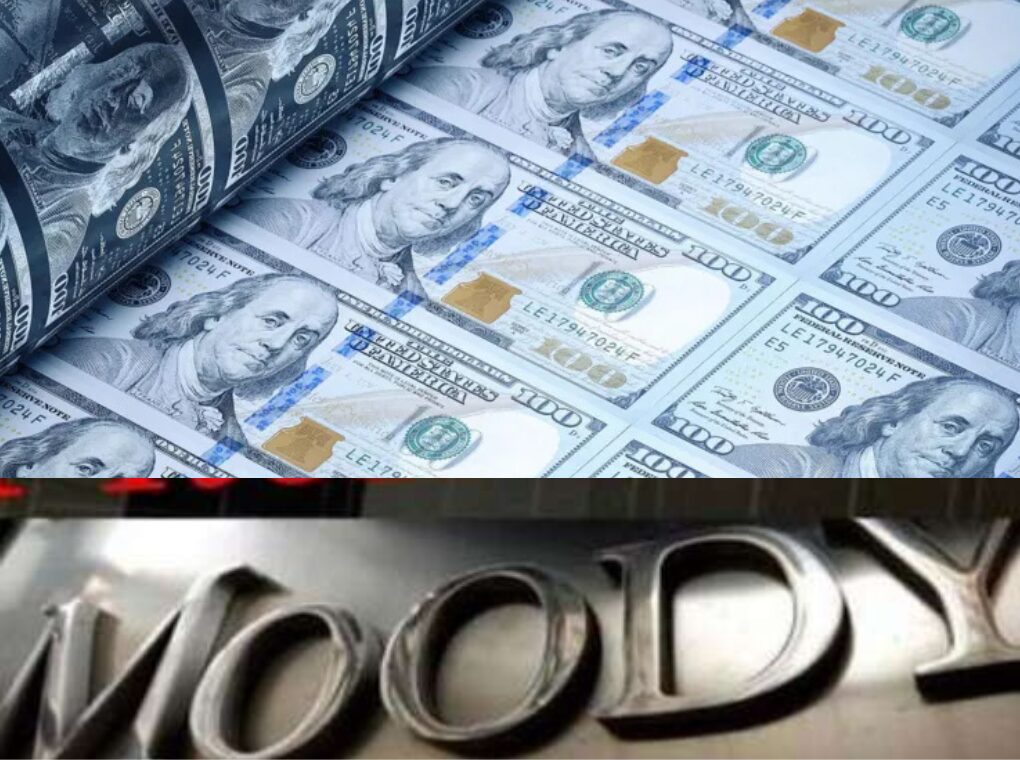On May 16, 2025, Moody’s downgraded the United States’ sovereign credit rating from its longstanding since 1917 AAA status to Aa1, marking a significant shift in global financial perception. The move reflects intensifying concerns over America’s worsening fiscal trajectory, driven by widening deficits, escalating debt-servicing costs, and persistent political gridlock that has stalled meaningful reform.
This decision came at a politically sensitive moment, coinciding with the failure of President Trump’s proposed $5 trillion spending bill in Congress. The bill, intended to extend the 2017 tax cuts while cutting entitlement programs like Medicaid, faced resistance even within Republican ranks, further highlighting legislative deadlock and economic uncertainty.
Moody’s cited unsustainable debt growth, weak revenue generation, and mounting obligations tied to entitlements and interest payments. The agency projects that the federal deficit could reach 9% of GDP by 2035, while overall government debt may climb to 134% of GDP, up from 98% just a year ago. Although Moody’s revised the outlook from “negative” to “stable,” it nonetheless signaled a decline in investor confidence.
This development brings Moody’s in line with S&P and Fitch, which downgraded U.S. creditworthiness in 2011 and 2023, respectively. With all three major credit rating agencies now concurring, attention has shifted not only to America’s fiscal management but also to the agencies themselves and the global standards they uphold.
What does the Downgrade mean for Americans?
Historically regarded as the gold standard for safe investments, U.S. government debt has now lost its last perfect score. This change may carry significant consequences for ordinary Americans.
Following a downgrade, yields on U.S. Treasury securities typically rise as investors seek greater compensation for perceived risk. This affects more than just government borrowing. Treasury yields—especially the 10-year bond—serve as reference points for a wide range of financial instruments, including mortgage rates, business loans, and global credit contracts.
As borrowing costs increase, both consumers and companies could feel the squeeze. Homebuyers may face higher interest rates, while businesses could see more expensive credit, slowing down investment and growth. The downgrade thus risks triggering ripple effects throughout the economy, from Wall Street to Main Street.
Concern over Credit Rating Agencies functioning?
While the U.S. downgrade prompted concern in financial markets, it also reignited global debate around the credibility and fairness of credit rating agencies (CRAs). In recent years India has been emerged as one of the most vocal critics of the “Big Three” — Moody’s, S&P, and Fitch — accusing them of systemic bias and outdated evaluation models.
Despite India’s steady economic performance, including 6–7% annual GDP growth, robust foreign reserves exceeding $700 billion, and structural reforms such as the Goods and Services Tax (GST) and the Insolvency and Bankruptcy Code, its sovereign credit rating remains stagnant at the lowest investment-grade level (Baa3 by Moody’s, BBB- by S&P).
This discontent has prompted India and its BRICS partners to advocate for new models of assessment. Proposals for a BRICS-led credit rating agency intended to introduce greater balance, inclusivity, transparency free from political ideology and regional perspective into the global financial system.
Rethinking the Role of Credit Rating Agencies
The question emerging from this debate is no longer whether downgrades are warranted, but whether the institutions issuing them are themselves in need of reform. CRAs have long attracted criticism for lacking transparency, exhibiting conflicts of interest, and failing to respond promptly to crises.
Their reputations were notably tarnished during the 2008 global financial meltdown, when highly rated mortgage-backed securities collapsed, contributing to systemic financial failure. Today, their influence remains significant, but concerns persist about the oligopolistic nature of the ratings industry, dominated by just three firms with little competitive oversight.
Additionally, the increasing incorporation of environmental, social, and governance (ESG) metrics into credit evaluations has introduced new complexities. While ESG factors are important, their uniform application can unfairly penalize developing nations that prioritize infrastructure, employment, and basic services over metrics designed by wealthier economies. In India’s case, such evaluations may not fully account for regional challenges and policy trade-offs required for development.
While CRAs defend their methodologies as market-driven and rooted in data, the stakes are too high for opaque or unbalanced assessments. When sovereign credit ratings influence borrowing costs, investment flows, and international reputation, fairness and clarity become not optional, but essential.
Calls for reform are not about rejecting the role of CRAs. Rather, they reflect a growing consensus that these institutions must evolve by modernizing their tools, contextualizing their criteria, and allowing for regional perspectives.
Conclusion: Downgrades Demand More Than Just Market Reaction
Moody’s downgrade of the U.S. highlights fiscal mismanagement and unresolved structural issues. But it also provides an opportunity—one that extends beyond Washington—to reevaluate how sovereign credit is judged worldwide.
As the global economic landscape shifts, the institutions that arbitrate financial credibility must keep pace. For both established and emerging economies, the credibility of CRAs depends on their ability to assess risk with transparency, consistency, and contextual awareness.
Until such reform is realized, credit ratings will continue to shape markets. But the trust placed in those ratings, especially by the nations they evaluate, will remain cautious, conditional, and increasingly so.
